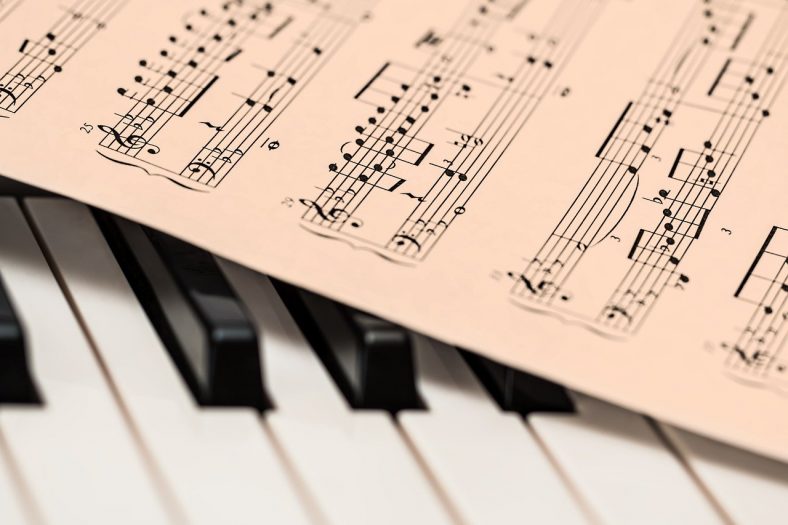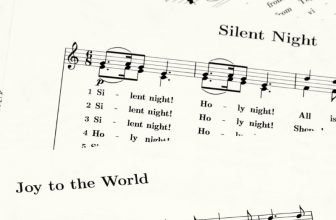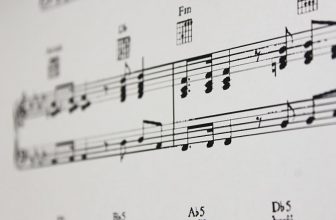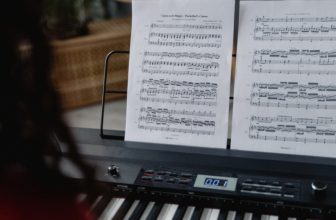Sheet Music vs Tabs vs Chord Charts – Which Should You Use?

Sheet music is a handwritten or printed representation of a piece of music. The notation form includes information such as pitch, chords, and even tempo. ‘Tab’ is short for ‘tablature’ and represents instrument fingering rather than pitch. Chord charts indicate the basic harmonic and rhythmic information for a song.
When you are learning an instrument or even training as a vocalist, sheet music, tabs, and chord charts often come in handy when you are learning a song. While some musicians prefer the old-school way of playing by the ear, knowledge of these three can come in handy if you want to collaborate and communicate with other musicians.
Let us try and understand what these three things are and their pros and cons:
1. Sheet Music
In music, notations are very important because they convey all possible information about a song or composition. In sheet music, the ‘staff’ is a key element. It comprises five lines and the lines and spaces represent different notes. These are determined by the different musical clefs used. The bar lines that run perpendicular to the staff give us information about its musical measures and articulation.
Sheet music can be used for various string instruments, piano, vocal arrangements, and even percussion instruments.
Pros of Sheet Music
- If you are an arranger or composer, the best way to communicate with musicians and instruct them to play a piece is through sheet music.
- The knowledge of sheet music enhances one’s ability to write and compose music more efficiently.
- Professional studio or touring musicians are expected to be proficient in sight-reading: the ability to play music by following sheet music.
Cons of Sheet Music
- It takes time to learn how to read sheet music. Sheet music for classical music can often be complex and those without knowledge of music theory may often find themselves at a disadvantage when trying to decode sheet music.
- Sight-reading is an advanced skill. Not only do you have to be very proficient at playing your instrument, but you also need to have quick reflexes and decode the sheet music in real-time.
- Since sheet music is so detailed, it takes time to write. If you do not pay attention to the details, you will end up conveying incorrect information.
Who Is Sheet Music For?
- Classical musicians.
- Professional instrument players who work in studio environments or are touring musicians for an artist.
- Composers and arrangers who want musicians to play their compositions.
Check out our list of free sheet music websites.
2. Tabs
Tabs are most commonly used for fretted stringed instruments since they give us information about where the fingers need to be placed to generate a particular note. This is different from sheet music because they do not have any information on musical pitches.
The word ‘tablature’ comes from the Latin word ‘tabulatura’. While ‘tabula’ means table, tabulating something means arranging it into a chart or table.
Apart from stringed instruments, tabs can also be found for drums, piano, and even harmonica.
Pros of Tabs
- Since tabs give us the location of the note, it can be especially helpful when playing cover music.
- Tabs are ideal for beginners when they start playing music and haven’t fully developed their ears yet.
- Tabs are easily available and most often for free. You can search for the tabs to your favorite song and learn it very easily, with practice.
Cons of Tabs
- Unlike sheet music, there is no standard way to represent a tab. Different publishers adopt different conventions when tabulating a piece of music.
- Tabs can often be inaccurate unless they have been written by the composers of a particular song or music.
- While tabs provide easy access to learning music, they do not give us tempo or rhythm information. Additionally, not learning how to play something by the ear can often hinder our progress to be a good instrumentalist.
Who are Tabs for?
- Guitar or bass players who are learning their instrument.
- Those looking for the easiest and most convenient way of picking up a song.
- Musicians who want to quickly make a note of chords, arpeggios, and solos in their songs.
Check out our list of guitar tabs websites.
3. Chord Charts
A chord is a harmonic set of notes in three or more different pitches that are played simultaneously. They are the most fundamental block of melody in a song. The pattern of chords played in a song is known as a chord chart.
While some songs, such as ‘Zombie’ by The Cranberries, have a simple chordal arrangement throughout the song, others can often be complex. This is when chord charts come in very handy.
A chord chart gives us the basic harmonic or rhythmic information of any piece of music.
Pros of Chord Charts
- A chord chart is the easiest way to play music and can be used for any melody instrument.
- Since sheet music can be too complex, chord charts are the standard way of communicating information even among professional musicians, regardless of genre or geography.
- Knowing how to reach chord charts helps budding musicians sharpen their skills.
Cons of Chord Charts
- Chord charts contain no information about tempo or rhythm, this can be a hindrance when working along with percussion instruments or drummers.
- If you want to cover a particular song, the chord chart alone will not be able to help you sound accurate. They do not mention where on the instrument a particular note or chord is played.
- You cannot rely only on chord charts when playing more complex songs or melodies.
Who Are Chord Charts For?
- Musicians who play improvisations. In some genres such as jazz, blues, or funk, there is immense scope when it comes to playing solos. Chord charts help you venture into unique territories and still be connected to the rest of the band.
- Rhythm sections of bands.
- Beginners who play an instrument as an accompaniment to vocals.
Conclusion
When you first start playing music, being able to follow a chord chart is a key to making good progress. But over time, you will find that chord charts may not be sufficient, especially when you want to work with other musicians.
This is when an understanding of tabs comes in handy. They too, however, have their limitations.
Many professional musicians will tell you that a basic understanding of sheet music will help you not only play better but also write music more easily. Although sheet music can be overwhelming at first if you spend a little bit of time learning it on a consistent basis, you will be at par with top professional musicians across the globe today.





